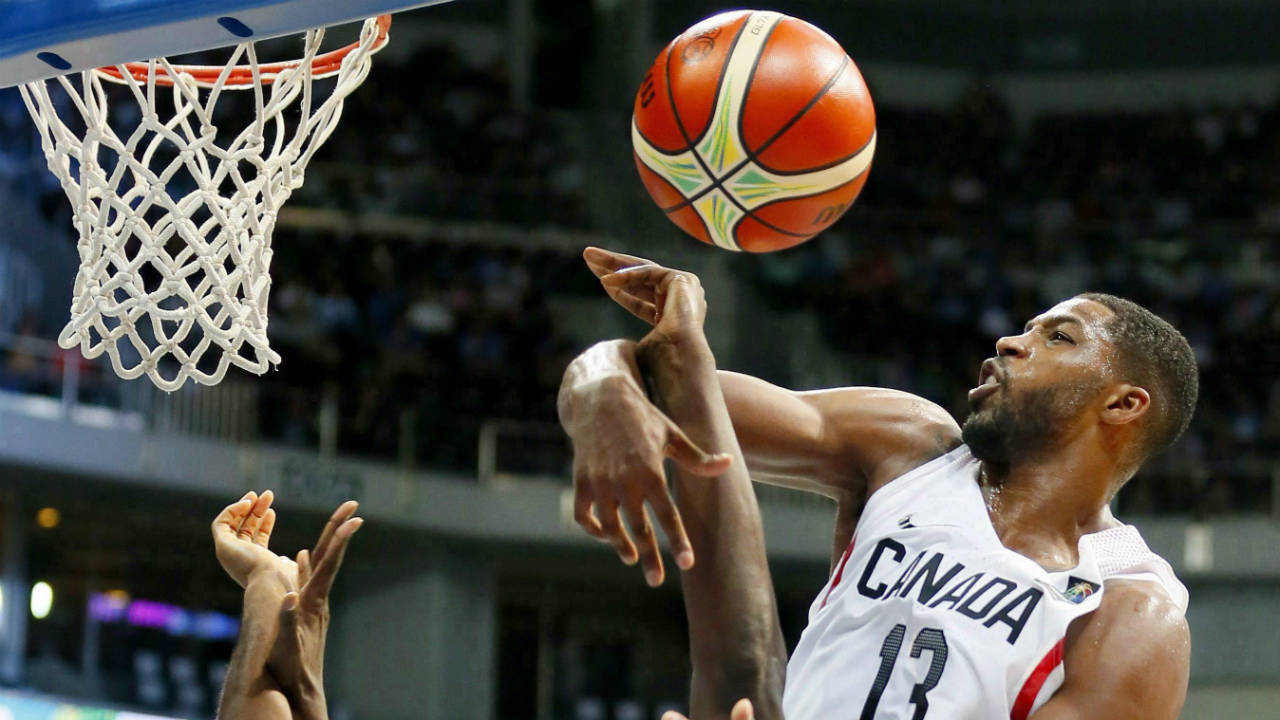“Some of that is really just understanding the nature of the new qualifying format. That in itself is a challenge.”
You said it, Roy Rana.
Unbeknownst to just about everyone, FIBA made changes to their qualification process for the World Cup and Olympic Games. The international basketball federation made the announcement back in 2015 but it’ll begin to take effect this November onwards as a “road to” the 2019 World Cup in China and the Tokyo 2020 Games.
So then, how does it all work? And where does Canada fit into all of this? Here’s a little FAQ to help you better navigate FIBA’s brand new qualification system.
The nuts and bolts
The continental championships (FIBA Americas/AmeriCup) will no longer be tied to World Cup and Olympic qualifying. Taking their place is a two-round, two-year continental qualifying tournament that decides who makes the World Cup, with Olympic teams determined heavily by the results of the World Cup.
How does the World Cup qualifier work?
There are 32 teams that will participate at the 2019 World Cup, and 31 spots up for grabs with China automatically qualifying as the host nation. The 31 allocated berths are then broken up into four FIBA continental zones with FIBA Africa getting five, FIBA Americas (where Canada plays) and FIBA Asia-Pacific (China’s zone) each getting seven and FIBA Europe with 12.
In total, 80 teams will be vying for one of those 31 qualification spots with 16 teams each participating in the Africa, Americas and Asia-Pacific zone and 32 in Europe. The 80 teams were paired down from a larger pool based off past continental championship results and there’s a chance four years from now, when the qualification cycle renews, that some teams could be relegated to what FIBA calls Division B.
The two rounds of the qualification tournament are both simply home-and-away round robins. In the first round, teams are broken up in groups of four with the top three in each group advancing to the second round, where those 12 teams are then broken up into groups of six with the best in those groups qualifying for the World Cup.
[relatedlinks]
How does Olympic qualification work?
Qualification for Tokyo 2020 will feed right out of the World Cup.
The top seven teams from the World Cup will all earn automatic Olympic berths, with Japan also guaranteed a spot as the host nation.
From there, the remaining four Olympic spots up for grabs are determined by four separate Olympic qualifying tournaments of six teams each. The 24 teams participating in these last-chance qualifiers are selected from the 16 next-best teams from the World Cup that didn’t get an automatic Olympic berth and two additional teams per tournament chosen by FIBA.
Where does Canada fit in this World Cup qualifier?
Team Canada is in Group D in the Americas zone with the Virgin Islands, Bahamas and Dominican Republic.
The team will open its qualification quest at home in Halifax against the Bahamas on Nov. 24 and then overseas in the Dominican Republic to close its first phase of Round 1.
The following is Canada’s entire first-round schedule:
• Nov. 24 – Canada vs. Bahamas
• Nov. 27 – Canada at Dominican Republic
• Feb. 22 – Canada at Virgin Islands
• Feb. 25 – Canada at Bahamas
• June 29 – Canada vs. Dominican Republic
• July 2 – Canada vs. Virgin Islands
Should Canada reach the second round of qualification it will need to be one of the top three teams in whatever group of six it gets placed in, or finish fourth and with a better record than the other group’s fourth-place team to qualify.
Wait a second, don’t those qualifier dates interfere with the NBA season?
Yes, they absolutely do, and FIBA doesn’t care.
According to some FIBA literature explaining their new competition system, “the national team is the locomotive for basketball promotion and development in each country.” As such, it seems FIBA doesn’t care much for when professional clubs play, the NBA included.
This is why you see a dearth of NBA talent on Canada’s roster for the upcoming AmeriCup Championship, Team Canada coach Rana says.
“The NBA players and the Euroleague players will not be eligible to play in November, which means our depth becomes more of a factor and we’re just gonna have to have more players, which we do,” said Rana Tuesday.
The earliest you might be able to see any of Canada’s more well-known NBA players won’t be until the third stage of Round 1 where there’s a chance Canada could be out of it already. Worse yet, Rana also confirmed that NCAA players wouldn’t be allowed to play during their seasons as well, while Jay Triano, Canada’s senior men’s national team program coach, said NBA G-League players can only play if they’re released from their contracts.
In other words, while this new system can provide great opportunity for the development of lesser-known players, a team that features top-flight NBA talent, like Canada or the United States, has suddenly seen a major competitive advantage ripped away.
What purpose does the AmeriCup serve for Canada now?
The FIBA AmeriCup, previously known as the FIBA Americas Championship, used to be a very significant tournament for Canada as it was one of the only means for the program to qualify for the world championships and the Olympics.
The new system, however, has made this championship into more of an ultra-competitive tune-up tournament for what’s to come three months from now. When the qualifiers officially start Canada’s roster will likely feature players on this AmeriCup team and putting them into a tournament environment without much risk will do wonders for the coaching staff.
Canada will open its AmeriCup against the Virgin Islands on Aug. 27.








